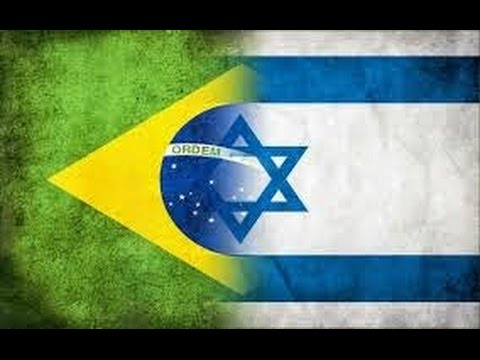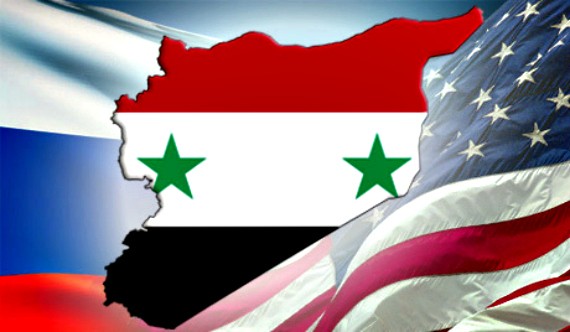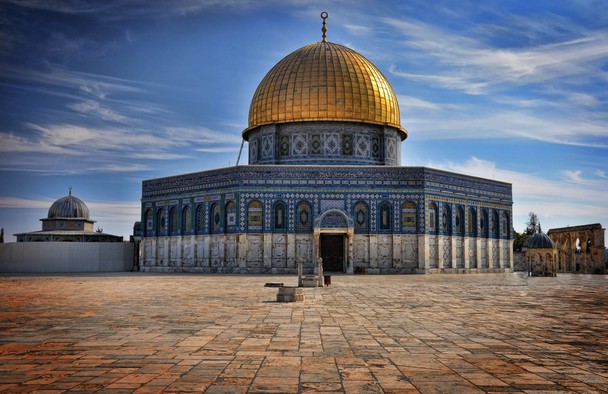Summary
Over the past few months, a wave of violence has enflamed tensions between Israelis and Palestinians once again. This time, though, it has taken on a new character, and rumors of a third intifada — the “intifada of knives” — abound.
It is hard to know at what point a string of attacks constitutes an intifada, the Arabic word for an awakening or uprising, just as it is difficult to predict just how long the latest surge in violence will last. But what is clear is that an opportunity has emerged for Palestinian leaders looking to shore up their legitimacy and make progress on certain political goals. However, both Hamas and the Palestinian Authority will face several constraints in taking advantage of the events unfolding before them.
Analysis
True to traditional intifada form, the latest spate of attacks was provoked by Israel’s perceived encroachment on the Temple Mount, one of the most religiously significant and politically charged sites in the world. Rumors that the Israeli government plans to change the status quo that bans non-Muslim prayer at the Temple Mount set off the stabbings in September. The Second Intifada began much the same way in 2000, when former Israeli Prime Minister Ariel Sharon visited the holy complex — a move Palestinians considered highly provocative. Tensions surrounding the Temple Mount also exacerbated the First Intifada: In October 1990, the Temple Mount Faithful, a Jewish extremist group that wanted to rebuild King Solomon’s temple where the Al-Aqsa Mosque stands, decided to lay a cornerstone at the compound, sparking the violent Temple Mount riots. The complex stands as a powerful symbol of the deeply entrenched divide between Israelis and Palestinians, and of their decadeslong struggle for control of a finite but priceless piece of land. It is no surprise, then, that it also stands at the center of their conflict today.
Yet the recent flare-up in violence is different from its predecessors in terms of its structure and political ramifications. The First Intifada began when violence erupted among the Palestinian population that Hamas and the Palestine Liberation Organization (PLO) then co-opted and led. Seven years later, Palestinian leaders once again lent cohesion and direction to widespread unrest, this time playing an even greater organizational role in directing the suicide bombings that came to characterize the Second Intifada. In this way, both intifadas had political goals that came from leaders who could negotiate and plan exit strategies.
The same is not true of the “intifada of knives,” which is occurring organically and outside of the Palestinian leaders’ control. In fact, Israel is having difficulty identifying any links between the numerous lone wolf attackers and Hamas or the PLO. The attacks are also difficult for Israeli security forces to detect and prevent, since lone-wolf assailants wielding edged weapons typically leave little to no communication and logistics trail to track. While the attacks have been mostly concentrated in the West Bank and East Jerusalem, a recent stabbing in Tel Aviv could reflect the widening of Palestinian attackers’ target sets in the future. And as security threats mount, leaders on both sides will be weighing their options on how to respond.
The Palestinian Perspective
In the West Bank, the embattled Palestinian Authority is primarily concerned with securing its own stability, longevity and territorial control. The group is already struggling to protect its share of power from Hamas, its main rival for the Palestinians’ support, and for the most part it is only able to do so with the collaboration and help of the Israeli government. However, by benefiting from Israel’s political, economic and security assistance, the Palestinian Authority is now open to attacks against its legitimacy among Palestinians, feeding into the Hamas narrative that the more moderate group refuses to stand up to perceived Israeli tyranny. As a result, the Palestinian Authority’s popularity has dropped in the West Bank as support for Hamas has risen. In September 2014, just after Israel’s Operation Protective Edge in Gaza concluded, The Palestinian Center for Policy and Survey Research found that 61 percent of Palestinians would vote for Hamas leader Ismail Haniyeh if he ran for the Palestinian presidency. A year later, the same organization found that two-thirds of Palestinians wanted Palestinian President Mahmoud Abbas to resign. And student council elections in April, which are seen as predictive of Palestinians’ political leanings, yielded an unexpectedly large victory for Hamas in the West Bank.
Given the Palestinian Authority’s waning support, it might make sense for the group to try to spearhead a third intifada to regain its legitimacy among Palestinians and take back its political market share from Hamas. But then again, such a move would also hasten the demise of the Palestinian Authority’s relationship with Israel — the very ties that have kept it afloat so far.
Hamas, by comparison, has more experience fighting against Israel, particularly in the recent past. However, it does not mean the group is better suited to wage an intifada. The security barriers walling Israel off from Gaza and the West Bank limit Hamas’ ability to funnel weapons and support to attackers on the ground, making it difficult to directly harness and coordinate grassroots attacks inside Israel. Consequently, the group would be largely restricted to providing rhetorical support from afar and supplementing the intifada with rocket launches. And yet even there its capabilities would be limited. Hamas has the ability to resume short-distance rocket launches, but it has been unable to restock its collection of long-range rockets such as the Iranian-made Fajr-5 or the Syrian-made Khaibar-1, which can reach Tel Aviv, Jerusalem and Dimona, since Operation Protective Edge ended. The lack of long-range rockets is due in part to increased Egyptian security at the Gaza-Sinai border, in part to Sudan’s shift away from allowing militants’ weapons to transit its borders, and in part to Israel’s heightened monitoring of maritime weapons smuggling routes.

And Hamas, like the Palestinian Authority, has its own competition for power to worry about in Gaza. The Islamic State, along with Palestinian Islamic Jihad and other smaller groups, is challenging Hamas’ authority in the territory, capitalizing on the perception among a sizable Palestinian minority that Hamas’ strategy against Israel is not extreme enough to enact change. The struggle for legitimacy could persuade Hamas to take charge of a third intifada. In October, senior Hamas official Mahmoud al-Zahar said it was necessary to turn the attacks against Israelis into a full-fledged intifada by using guns and explosives. Along the same lines, Haniyeh urged Palestinians to ramp up the intifada through armed resistance. Still, if Hamas were to assume a leadership role in escalating the violence against Israelis, the group could expect Israel to strike at its positions in Gaza — something Hamas is presently ill equipped to recover from.
Israel’s Strategy
For its part, Israel has adopted the strategy of holding Palestinian leaders accountable for things that happen in the territories under their control. The Israeli government rarely distinguishes rockets launched by Hamas from those launched by the Islamic State in Gaza, and it frequently holds the Palestinian Authority responsible for any acts of violence perpetrated by Palestinians from the West Bank. Its methods of doing so often affect the Palestinian population as a whole, including conducting mass arrests, ramping up settlement building and curbing Palestinians’ ability to enter Israeli territory for work. By doing so, though, the Israeli government creates somewhat of a self-fulfilling prophecy by antagonizing more moderate Palestinians.
However, Israel’s defense establishment has recommended the adoption of several conciliatory measures if the violence subsides as well. These include releasing prisoners, giving additional weapons to the PNA and increasing the number of work permits granted to Palestinian laborers. In fact, many Israeli officials are pushing for more serious steps toward reconciliation with the Palestinian Authority to stave off any further official encouragement of a third intifada. Palestinian leaders could well use their position to quell the violence in exchange for significant concessions, thus boosting their image among their constituents. Still, cooperating with Israel often undermines leaders’ legitimacy among Palestinians, and the Palestinian Authority probably would not be able to pull it off successfully. Therefore, it is far more likely that spontaneous violence and mounting tension between Israeli and Palestinian leaders will continue.
Officially, Abbas has not endorsed the string of stabbing attacks that have left 23 Israelis dead since September. But ever mindful of his need to demonstrate strength to his Palestinian constituents and rivals, Abbas has stopped short of condemning the attacks outright. Israelis have perceived his lackluster response as an intentional provocation of further attacks. Consequently, the Israeli government will likely continue to hold Abbas accountable for any further violence, using his purported responsibility as a pretext to avoid making political concessions. This could accelerate the deterioration of the relationship between the Israeli government and the Palestinian Authority, potentially even bringing Abbas’ presidency to an end.
In a reflection of the dismal state of Israeli-Palestinian relations, U.S. Secretary of State John Kerry made no mention of reviving peace talks during his latest trip to the region in late November. Palestinians are increasingly becoming more frustrated and desperate, and many believe the status quo cannot be changed without dramatic action. According to a 2015 Gallup poll, Palestinians are more supportive of an armed struggle against Israel than they have been for at least a decade, and more than two-thirds of the population believes that frictions between Israelis and Palestinians are worsening. The growing frustration that has fed into the latest “intifada of knives” is an opportunity for Palestinian leaders to change the status quo in Israel, but it is unclear whether they will be able to overcome the obstacles in the way of their success.








